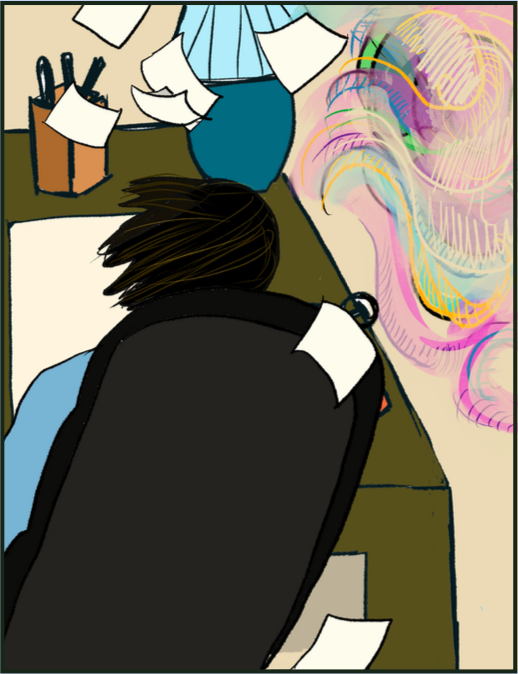What projects am I working on in February 2022?
Sustainability Research
I’ve been learning about sustainability since about 2018, and gradually picking up speed. In the term ‘sustainability’ I include related topics like climate change, environmentalism, and green technology.
Combined, they are a vast web of topics and it’s been difficult to know where to start. Last year, I took a bunch of climate-related online courses (the first three were free or take optional donations):
- Think Resilience by the Post Carbon Institute
- Awakening the Dreamer from the Pachamama Alliance
- The Game Changer Intensive from the Pachamama Alliance
- Climate Change: Learning for Action from Terra Do
… and that gave me a much better overall grasp of what I needed to learn in the first place. I’d recommend them all, but the first one especially, if you’re new to the subject. (I have no affiliation to any company or brand linked in this post.)
This quarter (January-March 2022) is the first time I’ve set myself a clearly-defined research project in this area, with a reading list and a deadline. I’m hoping that will help me make more regular progress.
I haven’t been doing a great job of documenting my progress thus far, and I want that to change. I’ve been collecting all my research updates here. I’m also doing a revamp on this website – I want to turn it into more of a comprehensive resource wiki, where you can look up any topic or question about sustainability that I’ve ever researched.
My YA Fantasy Novel
I started the novel back in 2020, when an idea for a protagonist, setting, and magic system hit me all at once out of nowhere. I picked it up again in December 2021 after a lull where I was still figuring out my writing process. I post novel updates here.
I haven’t shared any details about the novel yet, and I’d like to start breaking the cone of silence this quarter.
Art
Lastly, my painting isn’t quite a project the way I define it (something with goals and parameters, and occasionally a deadline). Painting is more of a practice I do to restore myself and enjoy my surroundings. However, I am listing my painting portfolio as a project that I update here.
* * *
So those are my projects for the quarter, and it’s a far more structured list than usual. I intend to document the journey here on the blog.
Below, I’ll comment on some questions you may have (or rather, that I ask myself constantly).
Why am I doing so many different things at once?
While working on fiction, nonfiction, and art at once goes against the conventional wisdom that you must pick ONE project for a period of your life, after a bit of experimentation, I’ve found that this is what works for me. I’ve done the thing where I’d be ‘just’ one thing for three months or a year or a season. It turns out to make me miserable, sort of like if you decided to only eat one food group for a whole year.
I’m not suggesting that this is ‘the’ correct way to do it, but it is ‘a’ correct way for me. I’m what they call a ‘multipotentialite’ – also referred to by various terms: Renaissance (wo)man, polymath, Scanner. They have different connotations some times (the first two especially are commonly applied to famous dead people) but I use them to mean ‘someone seriously pursuing multiple interests’.
Any notion of ‘ONE project at a time’ does NOT help me, but rather, one project per area of life.
What novel draft am I on?
Knowing how I like to work has been a huge improvement and an ever-evolving process of discovery. On the fiction front, an insight that changed how I approach writing (and all projects) was Ellen Brock’s categorization of writer styles.
You may have heard of ‘plotters’ and ‘pantsers’ – Ellen expands this categorization to better capture the variety and specificity of writing styles. Per her system, I identify most as a ‘methodological pantser’ – one of the most chaotic styles. We use a lot of systems and methodology, but we jump around from one to another as inspiration dictates.
Learning this has shown me that rather than try to pre-decide what aspect of a novel (or other project) I’ll work on, I need to instead capture ideas as they come, in the order they come in, and then organize them into a useful form. Imposing a small amount of structure on what I pursue is beneficial, but just enough.
All this to say, I’m not sure what draft I’m on because there isn’t a clear demarcation between drafts. I spent most of December 2021 on worldbuilding. Now, in February, I’m drafting in earnest. If pressed, I’d tentatively say I’m on the 2nd draft.
How do I keep track of and break down these projects?
I’m essentially following Sarra Cannon’s HB90 method, with a few tweaks. I use Notion to track most of my project tasks in Kanban boards. I also have a ton of notebooks. I like to use notebooks for coming up with ideas and writing stories. I prefer to do most of my project planning and tracking in digital form.
I’ll expand on my process of planning and tracking for the research and novel projects by and by. I don’t intend that to be a teaching resource or tutorial – I’ll link the ones I’m learning from, but I’m not an expert at it – but rather just another aspect of the research quest to document.





















